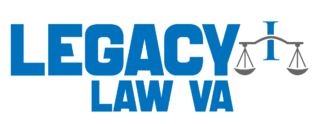Bankruptcy is often referred to as the nuclear option for debt relief. It eliminates or significantly reduces many types of debt, halts creditor harassment and prevents foreclosures, repossessions, wage garnishment and disconnection of utilities. It also provides a fresh start in which debtors can begin to rebuild their financial lives. However, bankruptcy does have a lasting impact on a consumer’s credit report for up to 10 years and can create challenges when trying to obtain loans for homes, cars and other necessities. As a result, it is generally only considered after consumers have exhausted all other options for reducing and managing their debt obligations. Before you decided to file for bankruptcy talk to a bankruptcy lawyer in Hawaii.
There are two different types of personal bankruptcy: Chapter 7, which liquidates certain assets, and Chapter 13, which enables individuals to repay some or all of their debts over a period of time. Not everyone qualifies for either option. To determine if bankruptcy is a good option, consumers should consider their income, spending habits and debt levels. They should also examine the benefits and drawbacks of other debt-relief options such as debt settlement or loan modification, which may be available from their creditors.
Debt Settlement
This is an attempt to convince creditors to accept less than the full amount owed on debt, and may include monthly payments over a period of time. While this approach is becoming more popular, it can have serious consequences on a consumer’s credit report and can be challenging to implement effectively.
For example, if you owe money to the IRS, an offer in compromise allows you to settle with the agency for less than what you owe. However, the IRS can still audit you and collect interest on any outstanding balances.
Debt Modification
This involves modifying the terms of a debt obligation to make it easier to pay, such as changing the interest rate on a home mortgage or automobile loan or extending the term of a car lease. Debt consolidation is another form of debt reduction that typically includes combining multiple debts into one monthly payment.
Chapter 7
A straight or liquidation bankruptcy, Chapter 7, is a process in which most of a person’s assets are sold to repay creditors who have filed legal claims. Most of the time, the assets sold are used to help the debtor get back on their feet and begin a new financial life. However, some assets can be exempted from sale and redeemed for the benefit of the debtor, including medical bills, some child support obligations, alimony or child support, student loans, tax liens, fines and fees, and most credit cards.
Whether you choose to file for Chapter 7 or Chapter 13 bankruptcy, you will need to gather all your financial records and prepare documents that include a petition, statement of financial affairs, schedules and other forms for the court. It is vital to review these documents with a lawyer so that you can make informed choices about what is best for your situation. You will also need to create a budget and be prepared for your credit score to take a hit during and immediately after filing for bankruptcy.

